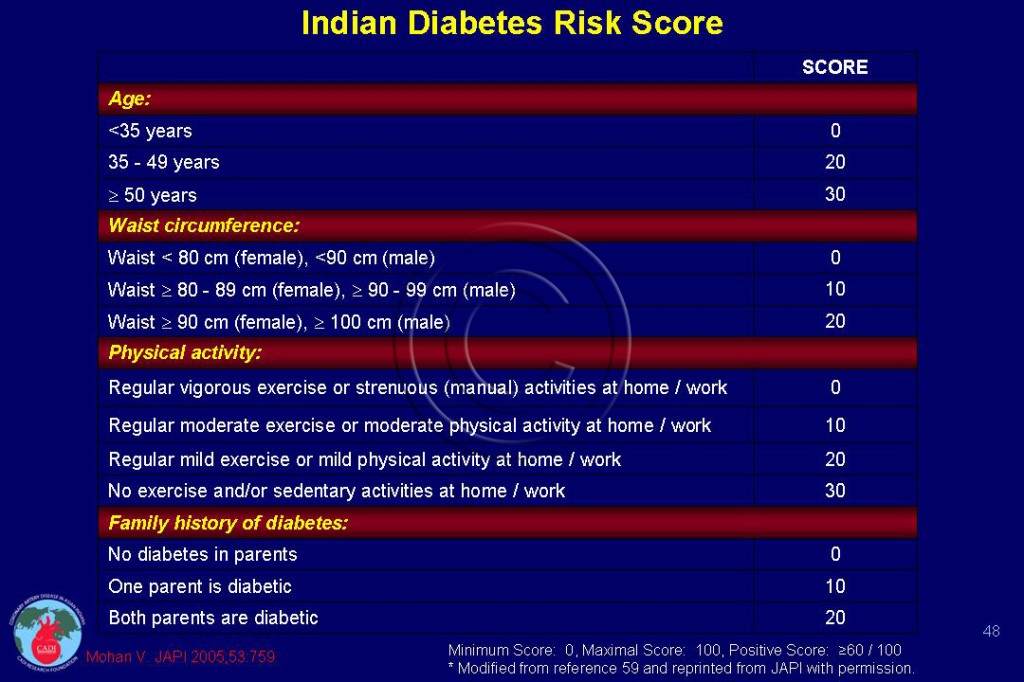Framingham Risk Score is the estimation of 10-year cvd (cardiovascular disease) risk of a person. It was developed by the Framingham Heart Study to assess the hard coronary heart disease outcome. It is used to estimate the risk of heart attacks in adults older than 20.
In the below calculator enter your gender, age, cholestrol level, BP and you get the 'Framingham Risk Score' and the risk of developing CHD. Higher the score, higher is the percentage of developing CHD.
CVD (Cardiovascular Disease) Risk Calculator
Framingham Risk Score is the estimation of 10-year cvd (cardiovascular disease) risk of a person. It was developed by the Framingham Heart Study to assess the hard coronary heart disease outcome. It is used to estimate the risk of heart attacks in adults older than 20.
In the below calculator enter your gender, age, cholestrol level, BP and you get the 'Framingham Risk Score' and the risk of developing CHD. Higher the score, higher is the percentage of developing CHD.
Guidelines on the prevention of CVD incorporate risk scores in order to make treatment recommendations [6,7]. However, older individuals are at high risk of death due to other causes than CVD. Currently recommended Framingham risk scores tend to overestimate CVD risk in an older population, as non-CVD mortality. The Framingham Coronary Heart Disease Risk Score estimates risk of heart attack in 10 years. There are several distinct Framingham risk models. Patients with high risk scores should be counseled aggressively about social factors contributing to their risk (smoking, exercise, weight, diet, etc) and also managed with. The Framingham Risk Score is a gender-specific algorithm used to estimate the 10-year cardiovascular risk of an individual. The Framingham Risk Score was first developed based on data obtained from the Framingham Heart Study, to estimate the 10-year risk of developing coronary heart disease.
NOTE:
Framingham Risk Assessment Tool
Cardiovascular disease risk assessment calculator should not be used if BP >185 or <100.
Framingham Risk Score Calculator Pdf Creator Download

Related Calculators:
Top Calculators
Popular Calculators
Top Categories
Draw a 2x2 table. A 2x2 table is the basis for many epidemiological calculations.
 [1]
[1]- Before you can draw a 2x2 table yourself, you must understand the variables:
- A = The number of people who both had the exposure and developed the disease
- B = The number of people who had the exposure but did not develop the disease
- C = The number of people who did not have the exposure but did develop the disease
- D = The number of people who neither had the exposure nor developed the disease
- Let's do an example 2x2 table.
- A study looks at 100 smokers and 100 non-smokers, and follows them for development of lung cancer.
- Right away, we can fill in part of the table. The disease is lung cancer, the exposure is smoking, the total numbers of each group is 100, and the total of all the people in the study is 200.
- At the end of the study, they found that 30 of the smokers and 10 of the non-smokers developed lung cancer. Now we can fill in the rest of the table.
- Since A = the number of people exposed who got the disease (i.e. smokers who got lung cancer), we know this is 30. We can calculate B simply by subtracting A from the total: 100 - 30 = 70. Similarly, C is the number of non-smokers who got lung cancer, which we know is 10, and D = 100 - 10 = 90.[2]